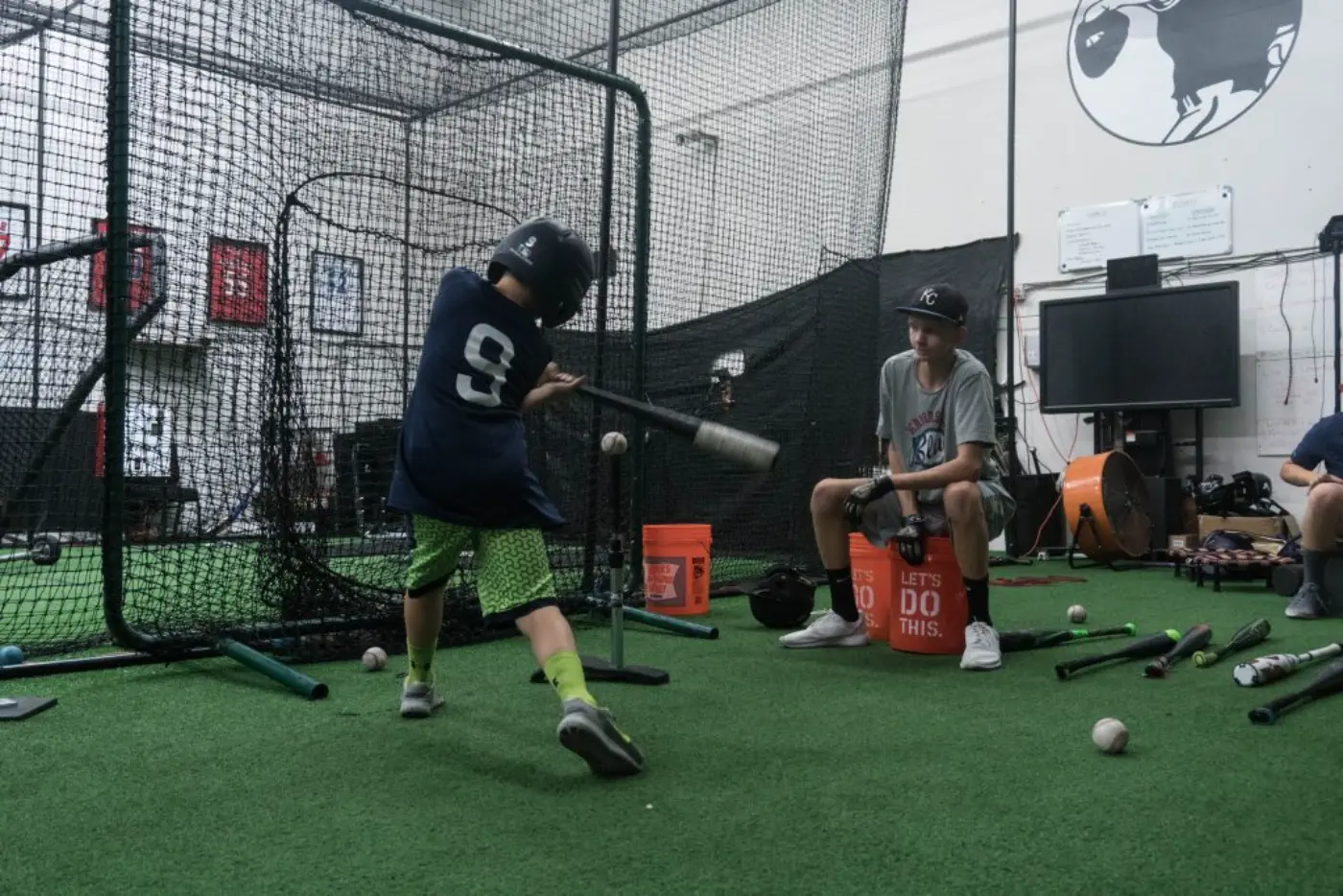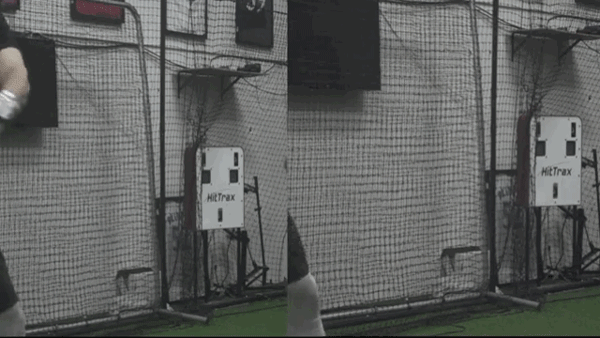Youth Baseball Hitting Mechanics

Everybody wants good youth baseball hitting mechanics. You want them, I want them, your athletes want them. Heck, even the folks that only hit twice a year—or twice a decade—at the local coin-operated cage want them. This should be easy to figure out, right?
On second thought, let’s acknowledge that we will most likely not come to a universal agreement about hitting mechanics anytime soon, much less within the space of this blog. There are just too many schools of thought, too many different approaches, and too much history—where coaches and players become disciples of one way of doing things and have a religious zealot-like attachment to the correctness of Their Thing, and their thing only.
Instead, let’s pivot to finding agreement on a simple set of goals for the output of ANY hitting approach. The desired outcome is to hit the ball hard, hit the ball far, and to have a set of hitting mechanics that allows us to maximize our chances of good outcomes when we’re getting off our “A” swing on a perfect BP pitch, but also when taking our “B,” “C” and every other swing on any number of other pitches.
When Coach asks what your approach is… pic.twitter.com/U3SVpK2vYT
— John Soteropulos (@Joney93) October 12, 2020
Simply put, we want to train hitters to hit by hitting.
Training Youth Baseball Hitting Mechanics
This is doubly important when it comes to youth players, who are not only learning how to perform the skill task that is hitting but are also literally learning how to move their own bodies at the same time. It bears repeating that training youth players is fundamentally different from training older amateur, collegiate, and professional baseball players and should be treated as such.
Given the differences between youth and older players, it makes even more sense to think about training youth baseball hitting mechanics by designing to give them freedom to find movement solutions that are oriented around very simple agreed-upon ideal outcomes—rather than expecting a series of “perfect” physical checkpoints in the swing.
We know from research that when players are focused on the internal configuration of their bodies, they are likely to reduce motor output. It is easy to imagine that this same issue is doubly impactful for the average youth player, as the task of actually staying in control of their bodies is likely more taxing than it is for older players because at a biological level, they are just less coordinated. This suggests that an ideal training environment for the average youth player is neither overly complex nor reliant on the “correct” execution of one or several movements but instead gives youth players a straightforward task to solve and the freedom to organize their intentions around this outcome.
So, if the best and simplest thing we can do is to teach kids how to hit by hitting, then it makes sense to evaluate the actual environments that we’re training kids to hit in. Having done so, we can optimize them in a way that allows our youth hitters to develop (you probably know what’s coming next) skills that scale as they grow in the game. This is where hitting Plyo Ball ® and mini hitting Plyo Ball ® become an ideal addition to our hitting environment.
Because if the truth of the quality of any swing is in the outcome, then we NEED that outcome to be accurate. That’s what hitting Plyo Ball ® balls give us.
THE ADVANTAGES OF TRAINING WITH HITTING Plyo Ball ®
In our ideal hitting training environment (and also in competition), every swing should be made in consideration of:
- Where the ball is in the hitting zone, and
- When the ball is in the hitting zone.
The simplest ideal outcome is to get the barrel there on time, with maximum surface area contact between bat and ball. Whether you are training in an environment with an abundance of tech (bat sensors and exit velocity monitoring systems like HitTrax) or a no-tech environment (a dirt field), you can evaluate whether the hitter has achieved our agreed-upon goals based on how far the ball is hit:
- Hitting the ball hard and far is good.
- Hitting the ball not far is…decidedly less good.
When you’re training with wiffle balls, due to the nature of the implement it’s possible—and to a degree likely—for those lines to become blurred because they will not give you accurate feedback about the quality of contact as measured by the distance the ball is hit.
Because they’re light as hell, oftentimes wiffle balls fly far when hit—regardless of whether the hitter could create ideal bat to ball contact. Even worse, due to the unique nature of wiffle balls and how they interact with the air, it’s possible that they may carry farther, not as a result of backspin generated by a correct attack angle but due to the physical properties of the wiffle ball itself.
This then serves to give feedback to the hitter that is decidedly inaccurate in terms of how the same swing would perform on the same incoming pitch if it were a baseball.

Hitting Plyo Ball ® are heavier than a wiffle ball
In contrast, one of the primary advantages of hitting Plyo Ball ® over wiffle balls is basic but incredibly impactful: they’re just heavier. Because they’re heavier, players will have to move the bat fast to hit them far. And as we’ve discussed previously, moving the bat fast (everybody feel free to join in here) is GOOOOOOOOOD!

This is especially so with youth players, who have all of the upside in the world to approach hitting training this way as they do not have a high school roster spot, college scholarship, or professional contract at stake if and when they fail along the way (more on this concept in our Youth Baseball Development certification).
Training Youth Baseball Hitting mechanics, Bat Path, and Intent
By training youth hitters with hitting Plyo Ball ® instead of wiffle balls, not only are we cultivating more high intent swings because players need to move the bat fast in order to hit Plyo Ball ® as far as possible, but the Plyo Ball ® are also less forgiving of mishits than wiffle balls, which makes for more trustworthy and accurate feedback on bat path.

While this may seem contradictory to a degree, there are decided advantages to constructing training environments to a level of difficulty that is at or above what players may see in competition. Of course, that doesn’t mean that we would set up youth hitters to hit off of a 100mph pitching machine when they don’t see anything more than 60-65mph in a game. When working with youth players, we want to be constantly thinking about how we can shift and modify our training environment in a way that suits the ability of the player. this is going to be the most effective way at training youth baseball hitting mechanics.
A youth player that needs to simply work on cultivating a high intent swing (which is probably 98% of all youth hitters) may be best served hitting Plyo Ball ® in a very easy to time up front flip, or soft side toss environment. A player who may be a little ahead of the developmental curve may be better suited for an alternating program of firm and soft flips—possibly at different offset angles of the incoming pitch as well—so that their timing and movement solutions are constantly challenged. In either case, we are broadly driving toward creating a training environment that’s less forgiving of mishits because we want to see players be able to generate more barrels in training and competition when they’re hitting real baseballs.

HITTING Plyo Ball ® GIVE IMMEDIATE FEEDBACK
Additionally, when kids are hitting with hitting Plyo Ball ®, we can also take advantage of the capacity of the implement to give players fast AND accurate outcome feedback. With that feedback, the player can immediately internalize the swings, swing decisions, and movement solutions that produced the ideal outcome of hitting the hitting Plyo Ball ® far.

I cannot overemphasize the benefit this presents, not only to the player but also to a parent or coach working with a youth athlete. Rather than the feedback loop being very negativity-oriented (“Don’t do X,” “Don’t do Y”), instead it is oriented around constant positive incentivization of what the player is doing well, immediately after they’ve done it.
Kid: (Hits the hitting Plyo Ball ® far)
Coach: Do that again!

Of course, there are layers to this. Certainly, youth players may benefit from some additional corrective intervention that is more hands-on, but generally, we work towards the same approach to hitting development via external cues that have already been proven to be effective with older and more skilled hitters.
Last, there is also the benefit of immediate visual feedback in the shape of the hitting Plyo Ball ® post-contact. The Plyo Ball ® maintains its shape when it’s hit flush but will deform if the player slices, shanks, or tops it. If good hitting is quality bat/ball contact, then having the implement immediately be able to confirm so is very powerful.
Despite what many parents may think, you don’t need to be Jason Ochart to create and manage a beneficial training environment for your youth hitter. While it is absolutely beneficial to understand how the best players in the world perform and take inspiration from the attributes that allow them to perform at that level, we do not need to construct training environments for youth players that mirror 1:1 the complexity that is hitting elite pitching at the higher levels.
I most certainly am not Jason or any other MLB hitting coordinator, but I feel very confident that my kids and my players are getting good, developmentally positive feedback when we hit because we train with hitting Plyo Ball ®, and I can let the environment be the teacher.
By Deven Morgan, Director of Youth Baseball
Comment section